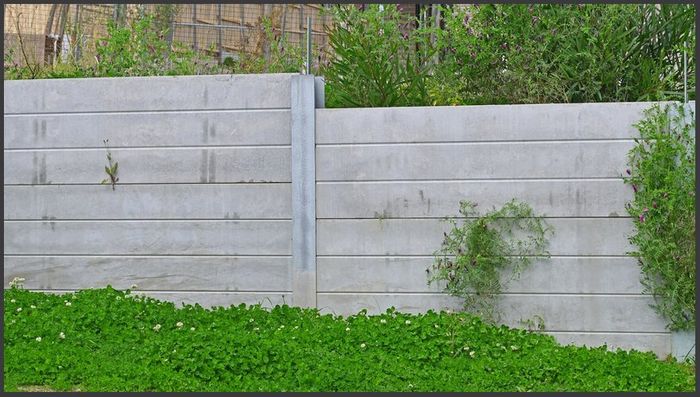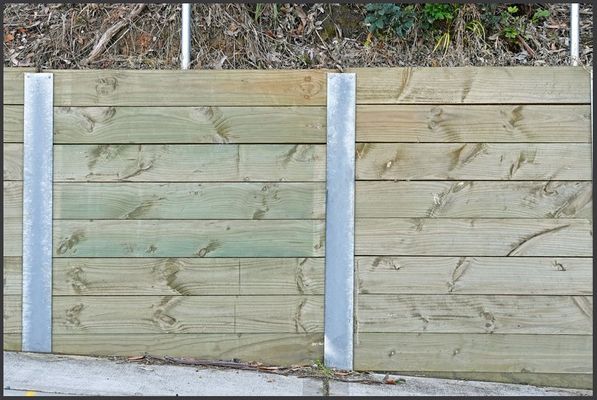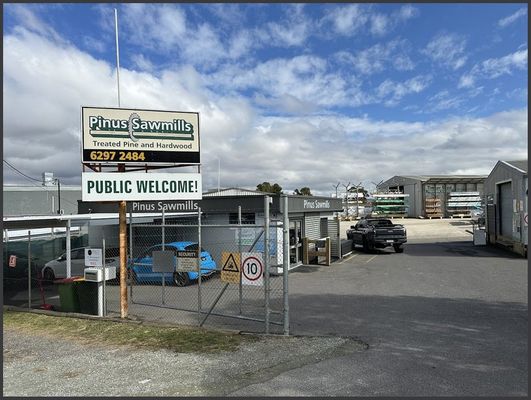Treated Pine Sleepers vs. Concrete Sleepers: Pros and Cons
Table of Contents:
- Understanding Treated Pine Sleepers and Concrete Sleepers
- Pros and Cons of Treated Pine Sleepers
- Pros and Cons of Concrete Sleepers
- Comparing Different Retaining Wall Materials
- Cost Considerations: Treated Pine vs. Concrete Sleepers
- Choosing the Best Material for Your Landscaping Needs
- Frequently Asked Questions
If you're looking to craft your dream outdoor space, or freshen up your existing area, choosing the best materials for the project is imperative!
In this guide, we're focusing on retaining walls, a commonly used component in landscape design. When in comes to choosing the right material, there are two popular options; treated pine sleepers and concrete sleepers.
Ultimately, the best choice for you and your landscaping needs will depend on your budget and the specific retaining wall project you're tackling. Both have their strengths and their weaknesses!
In this guide, we’ll compare treated pine sleepers vs. concrete sleepers, looking at their pros and cons, costs, lifespan, and suitability for different types of wall solutions. By the end, you’ll be able to make an informed decision on the best material for your specific needs!
Understanding Treated Pine Sleepers and Concrete Sleepers
What Are Treated Pine Sleepers?
Treated pine sleepers are wooden sleepers chemically treated to resist rot, termites, and moisture damage. They are generally used in timber sleeper retaining walls, garden beds, and other landscaping projects.
They have a natural look, making them a popular options for homeowners wanting to create a beautiful outdoor space with aesthetic appeal!
What Are Concrete Sleepers?
Is strength and durability what you're looking at? Well, concrete sleepers are solid, reinforced slabs designed for just that! They're commonly used in concrete sleeper retaining walls and are known for their structural integrity.
While they do tend to have an industrial look, a lot of modern designs are geared towards a more natural stone look that mimics stone walls or stackstone concrete sleepers.
Both materials have their place in retaining wall construction, but which one is the better option for your project? Let’s break it down!
Pros and Cons of Treated Pine Sleepers
Pros
• Cost-effective solution – Treated pine sleepers are one of the most cost-friendly building materials for retaining wall construction.
• Easy to install – Their lightweight nature makes them perfect for DIY enthusiasts looking to build a wall themselves.
• Aesthetic appeal – They offer a natural beauty look that blends well into most outdoor spaces.
• Wide range of applications – Besides retaining walls, treated pine sleepers are used for garden beds, pathways, and steps.
• Eco-friendly option – Treated pine sleepers have a lower environmental impact compared to concrete.
Cons
• Regular maintenance required – To extend their lifespan, treated pine sleepers need sealing and protection against moisture.
• Susceptible to soil erosion – Without proper drainage, water exposure can lead to rotting over time.
• Limited structural integrity for high walls – They are not ideal for high retaining walls that require heavy load-bearing capacity.
Pros and Cons of Concrete Sleepers
Pros
• Long-term durability – Concrete sleepers have a significantly longer lifespan than timber retaining walls.
• Higher structural integrity – Suitable for high walls and areas prone to heavy rainfall.
• Low maintenance – Unlike timber, they don’t require sealing or regular upkeep.
• Strong against wall failure – Their weight and reinforcement make them resistant to shifting or cracking.
Cons
• Higher initial costs – Concrete sleepers are more expensive upfront compared to treated pine sleepers.
• More difficult to install – Their heavy weight requires steel posts and additional structural support.
• Less visual appeal – Concrete sleeper walls have a more industrial look unless designed with a decorative finish.
Comparing Different Retaining Wall Materials
On top of treated pine sleepers and concrete sleepers, there are also several other materials you might like to consider! These include:
• Gabion walls – Made from wire baskets filled with natural stone, offering a rustic appearance and excellent drainage.
• Natural stone – Provides a timeless and premium look but comes with a higher price tag.
• Concrete block retaining walls – These offer flexibility in design and better structural support than timber sleeper walls.
• Stackstone concrete sleepers – A stylish choice that blends the durability of concrete with a textured stone-like finish.
• Hardwood sleepers – A natural and warm-looking option, but they require treatment to resist rot and termites.
Each option has its benefits, but treated pine sleepers and concrete sleepers are definitely the most common types for DIY projects and professional landscaping for their overall functionality and ability to fit most project scopes.
Cost Considerations: Treated Pine vs. Concrete Sleepers
When deciding between the two materials, cost is often a major factor and the ultimate decider of the option you go with! Here's the cost information you need:
• Upfront cost – Treated pine sleepers are generally the most cost-effective solution, while concrete sleepers come with a higher initial cost.
• Long-term costs – Concrete sleepers require little maintenance, while timber sleeper retaining walls may need replacing sooner.
• Local regulations – Some councils have specific requirements for retaining wall construction, particularly for high walls.
It’s important to factor in not just the material cost, but also installation expenses, drainage solutions, and long-term maintenance when choosing the best material for your landscaping project. Make sure your budget has room for any unforeseen costs!
Choosing the Best Material for Your Landscaping Needs
Both treated pine sleepers and concrete sleepers are effective solutions, but your decision should be based on:
• The height of your wall – High retaining walls require more structural support, making concrete the better option.
• Aesthetic preferences – If you want a natural look, treated pine sleepers are the best choice.
• Drainage requirements – Areas with heavy rainfall may benefit from concrete sleeper retaining walls due to their resistance to water damage.
• Budget considerations – If you’re looking for the most cost-effective solution, treated pine sleepers are ideal for small to medium retaining walls.
Whether you’re a DIY enthusiast or working with professionals, choosing the right material for you will help to future-proof for retaining wall and the overall outcome of your landscaping project!
Frequently Asked Questions
What is the lifespan of treated pine sleepers compared to concrete sleepers?
Treated pine sleepers typically last between 15-25 years with regular maintenance, while concrete sleepers can last over 50 years with minimal upkeep.
Are treated pine sleepers a cost-effective solution for retaining walls?
Yes, they are one of the most cost-effective solutions, especially for smaller retaining wall projects and garden beds.
Do I need steel posts for a timber sleeper retaining wall?
For smaller walls, timber posts may be sufficient, but for higher walls, steel posts provide better structural support and long-term stability.
Which is the better option for a tight space, treated pine sleepers or concrete sleepers?
Concrete sleepers work well in tight spaces where strength is essential, but treated pine sleepers are easier to work with in compact areas.
Can I build a concrete sleeper retaining wall myself?
Yes, but due to their weight, concrete sleepers require extra effort and tools. Many DIY enthusiasts prefer treated pine sleepers for their easier installation.
What are the most common types of retaining walls for landscaping projects?
The most common types include timber sleeper walls, concrete block retaining walls, gabion walls, and natural stone walls, each offering different benefits.
How do I prevent wall failure in a retaining wall project?
Proper drainage, strong foundations, and using the right material for structural integrity are key to preventing wall failure.
Is a concrete retaining wall the best choice for heavy rainfall areas?
Yes, concrete sleeper retaining walls are highly resistant to moisture and shifting, making them an effective solution for regions with heavy rainfall.
Do local regulations affect my choice of material for a retaining wall?
Yes, some councils have restrictions on retaining wall blocks, maximum height, and required materials, so always check before starting your project.
Final Thoughts
Both sleeper options explored in this guide are great options that come with their own advantages.
If you’re after a natural look and a budget-friendly option, treated pine sleepers are a great choice.
If you need long-term durability and higher structural integrity, concrete sleepers might be the better option.
No matter which you choose, ensuring proper drainage and following local regulations will help create a retaining wall that’s both functional and visually appealing.



